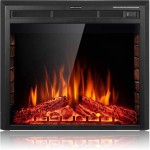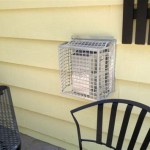Refurbished Fireplace Mantels: A Sustainable and Stylish Choice
Fireplace mantels serve as focal points in a living space, adding architectural interest and character to both traditional and contemporary homes. While a newly constructed mantel can be appealing, a refurbished fireplace mantel offers a compelling alternative, blending sustainability, historical preservation, and cost-effectiveness. Refurbishing, in this context, signifies restoring a used or antique mantel to a functional and aesthetically pleasing state, often involving cleaning, repairing, and refinishing techniques. This article explores the benefits, considerations, and processes involved in choosing and utilizing a refurbished fireplace mantel.
The Allure of Refurbished Mantels: Sustainability and Unique Character
The primary advantage of opting for a refurbished mantel is its inherent sustainability. By repurposing an existing item, resources are conserved, and the environmental impact associated with manufacturing a new product is lessened. The extraction of raw materials, the energy consumption during production, and the disposal of manufacturing waste all contribute to the environmental footprint of a new mantel. Refurbishing circumvents these processes, promoting a more environmentally conscious approach to home décor.
Beyond sustainability, refurbished mantels often possess a unique character and historical significance that new mantels generally lack. Antique or vintage mantels may bear the marks of time, such as subtle imperfections, distinctive grain patterns, or remnants of previous finishes. These characteristics contribute to the mantel's individual story and lend authenticity to the space. A mass-produced mantel, on the other hand, lacks this inherent personality and may appear generic in comparison.
Furthermore, refurbished mantels can be sourced from a variety of materials and styles, offering a wider range of choices than might be readily available in contemporary retail settings. One can find ornate Victorian mantels crafted from hardwoods such as mahogany or walnut, rustic farmhouse mantels made from reclaimed barn wood, or sleek mid-century modern mantels featuring minimalist designs. This diversity allows homeowners to select a mantel that perfectly complements their existing décor and reflects their individual aesthetic preferences.
The search for a refurbished mantel can also lead to the discovery of rare or unusual pieces that are no longer in production. These unique finds can become conversation starters and treasured possessions, adding a touch of exclusivity to the home.
Key Considerations When Selecting a Refurbished Mantel
Before purchasing a refurbished fireplace mantel, several factors require careful consideration. These include the mantel's dimensions, material, structural integrity, and aesthetic condition.
Dimensions:
The mantel's dimensions are paramount to ensure compatibility with the existing fireplace opening and surrounding wall space. Accurate measurements of the firebox opening, the hearth, and the available wall space are essential. The mantel's width, height, and depth should be carefully considered to achieve a balanced and visually appealing integration with the fireplace and the room's overall proportions. It is also important to account for any building codes or safety regulations regarding mantel clearances from the firebox opening.Material:
The choice of material will influence the mantel's appearance, durability, and maintenance requirements. Wood mantels are a popular choice, offering warmth, versatility, and a wide range of finishes. Stone mantels, such as marble or granite, provide a more formal and luxurious aesthetic. Metal mantels, typically made of cast iron or steel, lend a modern or industrial touch to the space. Consider the material's resistance to heat, humidity, and wear when making your selection. It is also important to inspect the material for any signs of damage, such as cracks, rot, or insect infestation.Structural Integrity:
A thorough inspection of the mantel's structural integrity is crucial to ensure its safety and stability. Examine the mantel for any signs of warping, splitting, or loose joints. If the mantel is made of wood, check for evidence of woodworm or dry rot. If the mantel is made of stone, look for cracks, chips, or discoloration. If any structural issues are identified, they should be addressed by a qualified professional before installation.Aesthetic Condition:
The mantel's aesthetic condition will determine the extent of the restoration work required. Assess the condition of the finish, looking for scratches, dents, or fading. Determine whether the existing finish is consistent with your desired aesthetic or if it needs to be stripped and refinished. Consider the presence of any decorative elements, such as carvings or moldings, and assess their condition. If the mantel is heavily damaged or has been poorly restored in the past, it may require more extensive and costly renovation.In addition to these physical attributes, it's crucial to verify the provenance of the mantel, if possible. Understanding its history and origin can add value and intrigue to the piece. Reputable dealers of refurbished mantels should be able to provide information about the mantel's age, material, and prior use.
The Refurbishing Process: Restoring a Mantel to its Former Glory
The refurbishing process typically involves several stages, from cleaning and repairing to refinishing and sealing. The specific steps required will vary depending on the mantel's condition and the desired aesthetic.
Cleaning:
The first step is to thoroughly clean the mantel to remove dirt, dust, grime, and any existing finishes. This can be done using a combination of dry brushing, vacuuming, and gentle cleaning solutions. Avoid using harsh chemicals or abrasive cleaners, as these can damage the mantel's surface. For wood mantels, a mild soap and water solution is generally sufficient. For stone mantels, a specialized stone cleaner may be required.Repairing:
Once the mantel is clean, any necessary repairs should be made. This may involve filling cracks or holes with wood filler or epoxy, repairing loose joints with wood glue and clamps, or replacing damaged sections with matching materials. For more extensive repairs, it is advisable to consult with a professional carpenter or restoration specialist.Stripping (if necessary):
If the existing finish is damaged, peeling, or inconsistent with the desired aesthetic, it may be necessary to strip it off entirely. This can be done using chemical strippers, heat guns, or sanding. Chemical strippers are effective at removing multiple layers of paint or varnish, but they require careful handling and proper ventilation. Heat guns can soften old finishes, allowing them to be scraped away, but they can also scorch the wood if used improperly. Sanding is a more labor-intensive method, but it allows for greater control and precision. Wear appropriate safety gear, such as gloves, a respirator, and eye protection, when stripping finishes.Sanding:
After stripping the finish (or if no stripping is necessary), the mantel should be sanded to create a smooth and even surface. Start with a coarse-grit sandpaper to remove any remaining imperfections, and then gradually move to finer-grit sandpaper to achieve a polished finish. Sand with the grain of the wood to avoid scratching or damaging the surface. Dust the mantel thoroughly after sanding.Refinishing:
Once the mantel is sanded and smooth, it is ready for refinishing. The choice of finish will depend on the desired aesthetic and the type of material. Wood mantels can be stained, painted, varnished, or oiled. Stone mantels can be sealed to protect them from stains and moisture. Metal mantels can be painted or powder-coated. Apply the finish according to the manufacturer's instructions, and allow it to dry completely before proceeding to the next step.Sealing:
Finally, the mantel should be sealed to protect it from moisture, dirt, and wear. A clear sealant will create a durable and water-resistant barrier that will prolong the life of the finish. Apply the sealant according to the manufacturer's instructions, and allow it to dry completely before installing the mantel.When considering a refurbished mantel for use in a new construction or remodel project, it's essential to consult with both the contractor and the local building inspector. They can ensure the mantel meets current fire safety codes and building regulations. Proper installation, including adequate fire-resistant backing and clearances from combustible materials, is critical for safe operation.
Ultimately, selecting a refurbished fireplace mantel presents a compelling blend of sustainability, unique aesthetic appeal, and potential cost savings. By understanding the key considerations and the refurbishing process, homeowners can make informed decisions and acquire a centerpiece that embodies both history and style.

Artisan Crafted Rustic Fireplace Mantel 100 Year Old Reclaimed Wood

Rustic Reclaimed Fireplace Mantel Century Old Wood Beam Personalized Sizes Shades With Corbels Real

Fireplace Mantles American Reclaimed

Wood Fireplace Mantels Reclaimed Barn

Reclaimed Wood Fireplace Mantel Iron Accents

Reclaimed Mantel Dakota Timber Co Fireplace Mantels

Rustic Reclaimed Fireplace Mantel Century Old Wood Beam Personalized Sizes Shades With Corbels Real

Reclaimed Barn Beam Fireplace Mantels Rustic Ohio Home Wood Mantel

Distinctive Rustic Fireplace Mantel With Legs And Inside Mantels Reclaimed Wood Surrounds

Reclaimed Pine Fireplace Mantel
Related Posts








